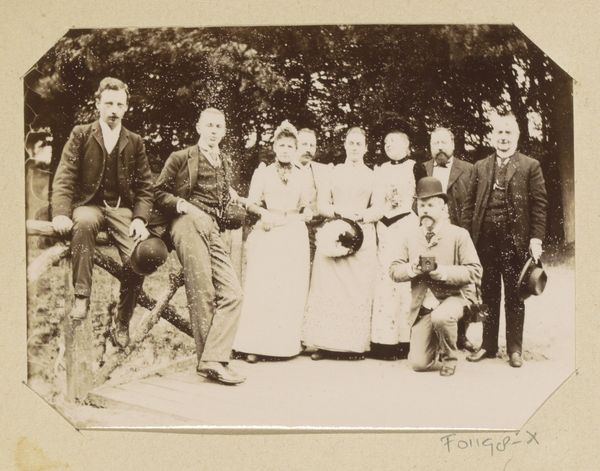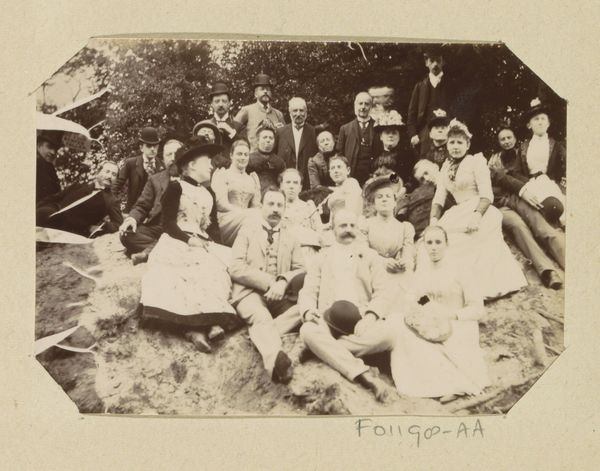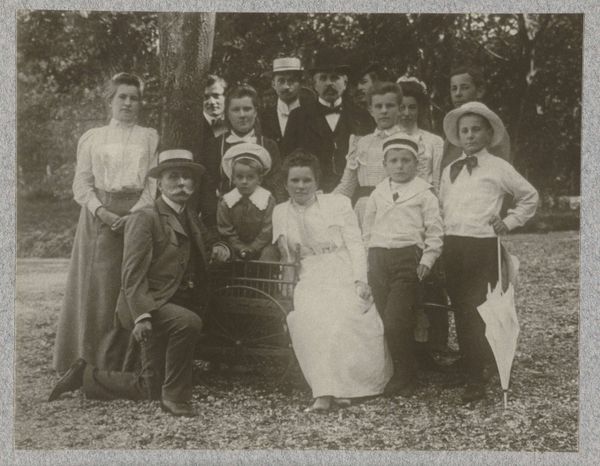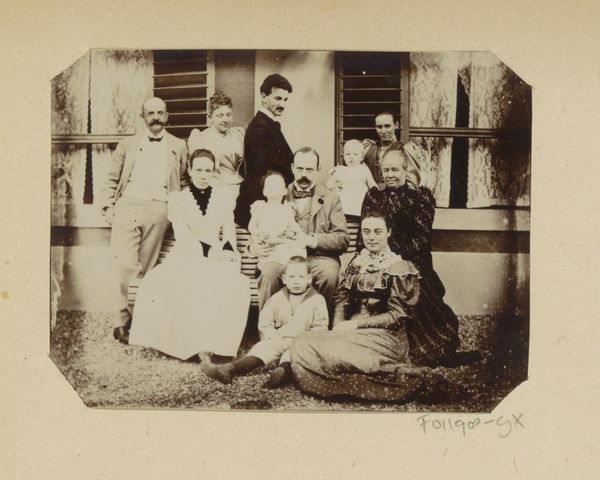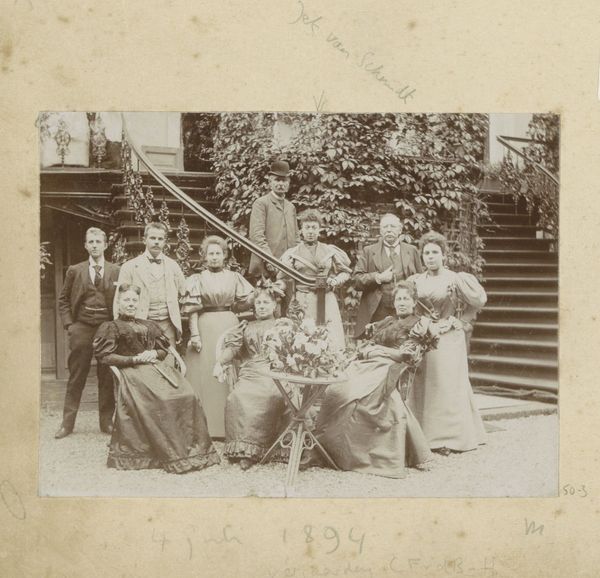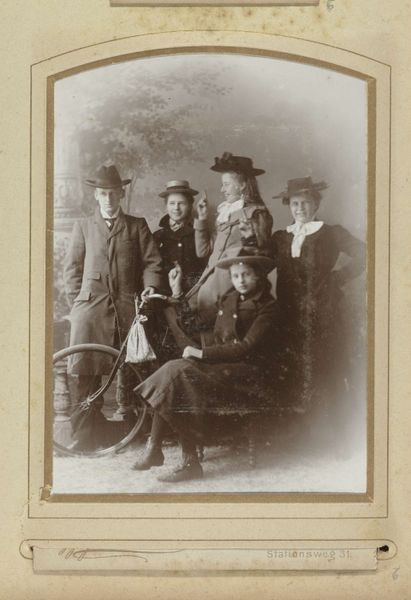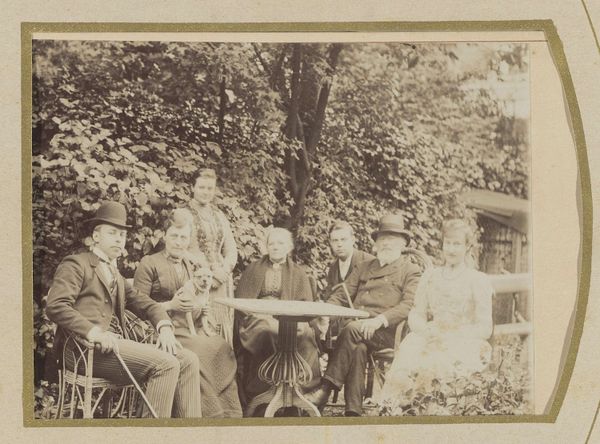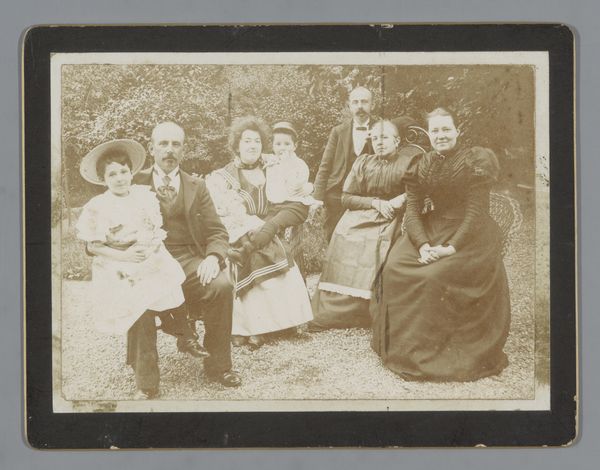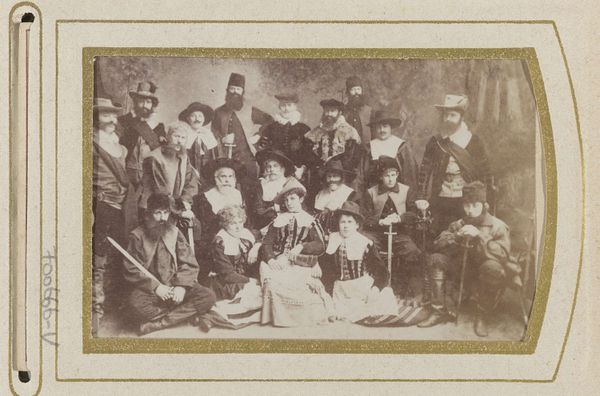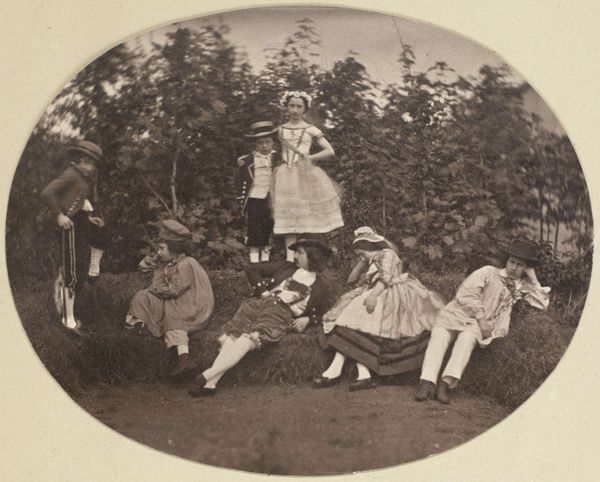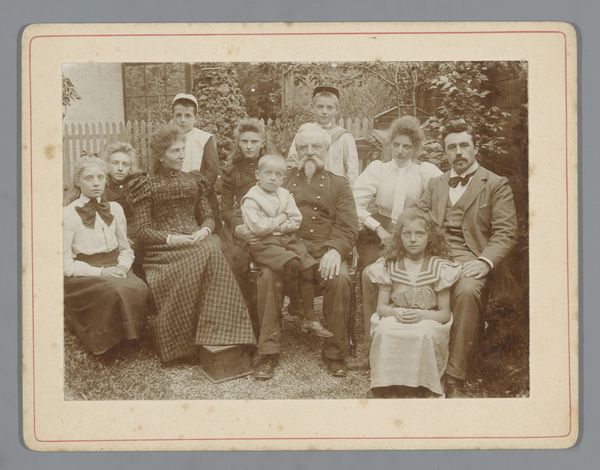
photography
#
portrait
#
wedding photograph
#
pictorialism
#
wedding photography
#
archive photography
#
photography
#
historical photography
#
group-portraits
#
19th century
Dimensions: height 63 mm, width 89 mm
Copyright: Rijks Museum: Open Domain
Editor: This is a photograph titled "Groepsportret van de familie Piek rondom een houten kar," taken sometime between 1889 and 1893. It depicts a group of people posing around a wooden cart. I'm struck by the formality of the image and wondering, how might we interpret this staged scene? Curator: This image provides a fascinating glimpse into late 19th-century societal norms and the performance of identity within a family structure. Consider the careful composition: who is positioned where and why? What does this say about the power dynamics, gender roles, and social status within this family at that particular moment? How does this relate to larger systems of class and social standing during that era? Editor: I hadn't considered it in terms of power dynamics. Is the wooden cart somehow symbolic in this setting? Curator: Potentially. Think about what a cart represents: transportation, labor, perhaps even a family business. It’s a utilitarian object brought into a staged, aestheticized scene. What is the tension created by bringing elements of everyday life into what is meant to be a formal portrait? Is it perhaps trying to show wealth, stability, social status? It may not be accidental. Who do you see at the center of the group? Editor: There appear to be two men in the front of the group. The gentleman who is crouching may have limited mobility since he is resting his hand on the wheel of the cart. The men, at least, appear to hold important positions in the family. Curator: Exactly! And what does the clothing tell us? Who has elaborate ornamentation, who does not? Consider, too, that portrait photography at this time was still a significant investment. Families were deliberately presenting an image, literally and figuratively. Also think about photography during this time: what message does it signal about the family being progressive, as being consumers of recent technologies, and about their perceived place in Dutch society? Editor: It's interesting to consider this photograph not just as a snapshot of a family, but as a carefully constructed narrative meant to convey specific social and economic messages. I’ll look at photos differently from now on! Curator: Precisely! Seeing the image as an active agent becomes transformative and shows that visual culture participates with history.
Comments
No comments
Be the first to comment and join the conversation on the ultimate creative platform.
